The joint founder of one of the firms to emerge from Davis LangdonŌĆÖs sale to Aecom talks to Dave Rogers about that deal, why it was the making of many and the importance of taking nothing for granted
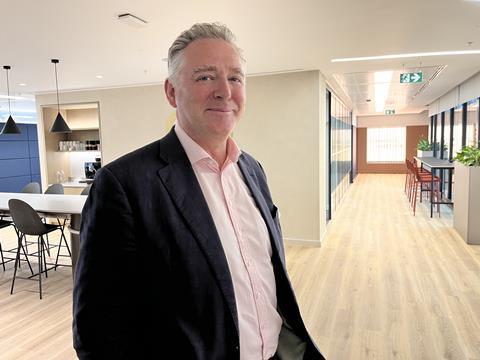
James Clark canŌĆÖt help but notice that time has marched on. One of the founders of London cost consultant Core Five, he is going through a list of the projects he would later work on after joining Davis Langdon as a graduate QS in the late 1980s.
ŌĆ£Chiswell Street, Bunhill Row, Plough PlaceŌĆ”ŌĆØ He trots them off in quick succession. ŌĆ£I looked after Woolgate Exchange for [property investor] MEPC.ŌĆØ
It is pointed out to him that it has recently been redeveloped, this time by Mace for Stanhope. ŌĆ£Another one,ŌĆØ he sighs. ŌĆ£ItŌĆÖs another reason why I have to retire. Too many of the projects that I built are being redone. ItŌĆÖs depressing.ŌĆØ
Clark officially stepped down from the firm he helped to set up 13 years ago at the end of March ŌĆō but he is planning on working at Core Five for a few days each month for the next few months and taking it from there.
ŌĆ£What weŌĆÖve both said is, ŌĆśletŌĆÖs give it three months and see whether itŌĆÖs workingŌĆÖ. If itŌĆÖs not working for the firm, I need to step back and, if itŌĆÖs not working for me, IŌĆÖm going to step back. If itŌĆÖs working well, I will carry on if the firm is keen for me to do so.ŌĆØ
There has been no bust-ups or fall-outs but Clark, who turns 60 in August, is keen to do something else while he remains young and active enough. He and Sara, a wine importer and his partner of the past six and a bit years, want to go travelling.
Rather than carrying on and slogging every day, letŌĆÖs go and enjoy each otherŌĆÖs company. No one on their death bed says, ŌĆśI wish I had spent more time at workŌĆÖ
He lost his wife Ali a dozen years ago, aged just 50, to cancer while SaraŌĆÖs husband John died seven years ago in his early 60s. Just over 18 months ago, ClarkŌĆÖs brother Andy, who was living in the US, died suddenly, aged 61.
ŌĆ£All of that experience shapes you,ŌĆØ he says. ŌĆ£WeŌĆÖre young enough to go and enjoy our lives. Rather than carrying on and slogging every day, letŌĆÖs go and enjoy each otherŌĆÖs company. No one on their death bed says, ŌĆśI wish I had spent more time at workŌĆÖ. I donŌĆÖt want to be too tired to do much.ŌĆØ
His departure, though, feels a bit like the end of an era given that he played a major role in the shape-shifting events that occurred in the wake of Davis LangdonŌĆÖs decision to sell up to Aecom. A raft of London cost consultants ŌĆō Core Five, Alinea, Exigere ŌĆō came out of that acquisition which, 15 years on, for those in the eye of the storm, can still cause angst.
Clark had joined Davis Langdon in 1988 as a graduate QS from Trent Polytechnic. He had his interview with the firm when it was still called Davis Belfield & Everest and, by the time he accepted a job offer, it had been renamed Davis Langdon & Everest as the firm had merged with Langdon & Every in the meantime.
It kept its new name for another half a dozen years before eventually settling on Davis Langdon ŌĆō best known as DL ŌĆō after it became a limited liability partnership in 2004.
Clark worked at DL for more than 20 years, eventually leaving in late 2011. He was made a managing partner around 2003 and, as result, has an insiderŌĆÖs take of the deal which changed the face of London cost consulting for good.
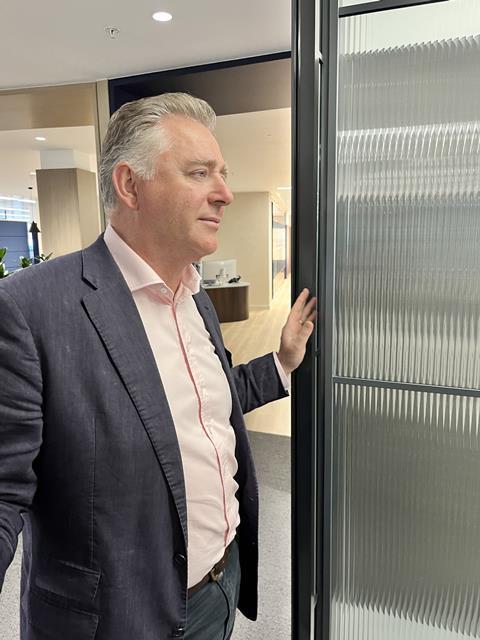
He is not especially keen to get into finger-pointing but admits that he was firmly in the ŌĆ£noŌĆØ camp when the DL partnership voted on the Aecom proposal. Asked why Davis Langdon was sold ŌĆō unlike John Laing, picked up by OŌĆÖRourke for ┬Ż1 nearly a decade before, it wasnŌĆÖt a distressed seller ŌĆō he is at a bit of loss.
ŌĆ£I didnŌĆÖt think we needed to [sell],ŌĆØ he says. ŌĆ£ItŌĆÖs quite a long time ago but I think there are pressures that are brought to bear by factions within any partnership.ŌĆØ
He chooses his words carefully but says of the eventual decision to sell up: ŌĆ£When you have a very strong allegiance to a company and, when that company is your world, I think you care massively about it. It becomes an emotional relationship, not a transactional one. ItŌĆÖs a bit like loss; you have to process that and you sort of have to grieve the loss of the business.ŌĆØ
The deal was completed in the summer of 2010 and Clark says he initially stayed on out of sense of duty.
ŌĆ£The whole deal is about the partnership and you go with the collective. We felt it was important to give it a go. You canŌĆÖt chirp against it all, so we said, ŌĆśletŌĆÖs give it a runŌĆÖ.
ŌĆ£When you are in a leadership position, itŌĆÖs quite important you are singing from the same songsheet as the business because thatŌĆÖs your job. But, if you feel the tune is slightly different, youŌĆÖre in a personal bit of conflict. At that point, itŌĆÖs probably time to go.ŌĆØ
I recognise Aecom is a great company. They just do things slightly differently to the way we feel they should be done
He has no animosity towards Aecom and understands why the firm made its move, sealing the deal for just over ┬Ż200m. The DL name disappeared in 2013 after a period of being called the rather unwieldy ŌĆ£Davis Langdon, An Aecom companyŌĆØ.
ŌĆ£They wanted to grow their business, they wanted a foothold in the commercial aspects of the UK market to support the engineering businesses they had bought. It was a natural next step for them.ŌĆØ
He adds: ŌĆ£I recognise Aecom is a great company. They just do things slightly differently to the way we feel they should be done.ŌĆØ
But he also says that AecomŌĆÖs move accidentally begat the companies that came out of Davis Langdon. There had been no grand plan, he concedes, to do so beforehand.
ŌĆ£The sale to Aecom basically put a rocket under our backsides. I suspect, if DL were here today, I would still be there and I think we all probably would ŌĆō and I donŌĆÖt think we would be enjoying it quite so much.ŌĆØ
Clark, along with two other senior DL figures ŌĆō Gerard Cook and Barry Hayden ŌĆō resigned in late 2011. ŌĆ£We had been talking about it but there wasnŌĆÖt a lot of a plan,ŌĆØ he admits. ŌĆ£So we needed to think about what the plan might look like.ŌĆØ
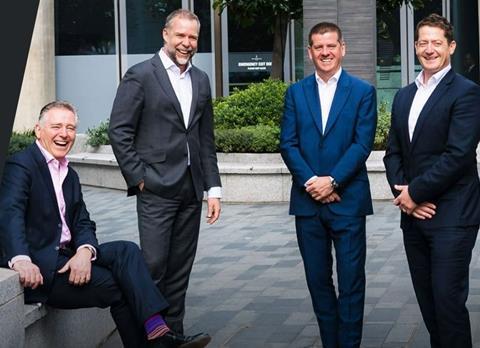
He is especially proud of the fact that, when they left, he, Cook and Hayden did not take a bunch of clients with them. ŌĆ£There was absolutely no way we were going to talk to our clients [beforehand]. It would have breached a whole load of responsibilities we owed the company. We left with a completely clean slate.ŌĆØ
The three were joined a few months later by fellow Davis Langdon refuseniks Chris Amesbury and the now retired Steve Pickersgill, who had also decided to call it quits.
ŌĆ£We opened in May 2012 in the basement of [engineer] Mike Harvey Associates. He said, ŌĆśYou can have six desks in my basementŌĆÖ. No agreement was required, he trusted us and we grew from there.
ŌĆ£By Christmas, we had filled up his basement and then came onto his ground floor and he said, ŌĆśyou guys are going to have to goŌĆÖ. So we went to 83 Blackfriars, we took a floor, we gradually kept growing and we moved into 230 Blackfriars.ŌĆØ
The firm stayed at 230 for eight years before, last month, it moved into a larger office at nearby South Bank Central.
In its first year, Core Five employed a dozen people and had an income of around ┬Ż600,000. ŌĆ£Now itŌĆÖs something like 180 and itŌĆÖs ┬Ż24m,ŌĆØ Clark says, proudly.
Despite the absence of an initial plan, Clark says the firm was ambitious. ŌĆ£We very confidently had three zeros before the 1 so our first job, job 0001, was a refurb in Pall Mall for QNB Capital, just across the road from the RAC Club.ŌĆØ
But the project that put the firm on the map was an office scheme in the City called One Creechurch Place. It was built by Skanska for Helical and opened in 2016.
ŌĆ£Gerald Kaye [HelicalŌĆÖs then development director who later became chief executive before retiring last year] got in touch with us about it. It was a massive project. IŌĆÖm forever grateful to Gerald for trusting us with it. That was the biggest thing for us because it said, ŌĆśthis firm is a firm of grown-upsŌĆÖ.ŌĆØ
From that came a slew of projects, notably British LandŌĆÖs redevelopment of Broadgate. When its then head of construction Richard Elliott got in touch, Clark initially thought it was to work on a listed building that was a much smaller part of the redevelopment. ŌĆ£Instead, he put us on the tower.ŌĆØ
WeŌĆÖve always shut the conversation straight down. We are not going to sell the business
The tower in question was 2-3 Finsbury Avenue, which at the time was designed by Arup Associates, but was later redrawn by 3XN and is now being built by Sir Robert McAlpine.
He says the firm has had its fair share of would-be buyers but all suitors, either from the trade or private equity, have been rebuffed. ŌĆ£You might get a jokey ŌĆśwould you be prepared?ŌĆÖ question or unsolicited emails from private equity. WeŌĆÖve always shut the conversation straight down. We are not going to sell the business.ŌĆØ
A little over 18 months ago, the firm became an employee-owned trust (EOT). Clark says: ŌĆ£It was the right thing to do, to hand the business on to the next generation, hence the EOT. It ensures the independence of the business and it also ensures the succession.ŌĆØ
EOTs, which were created in 2014 to enable employees to acquire ŌĆō through the sale of shares by existing owners ŌĆō a controlling interest in a company, have come in for a rough time recently given that several firms that have collapsed were EOTs when they sank. Clark says it is unfair to say EOTs were to blame.
ŌĆ£With an EOT, you need to be patient and not greedy. Some times you wonder if some have tried to take a little bit too much out too soon, and then the business struggles for cashflow. Cash is king for any business.ŌĆØ
He says there will be bits about work he will miss ŌĆō colleagues and clients ŌĆō and some bits he wonŌĆÖt. ŌĆ£I have lots of friends in the industry and I donŌĆÖt want to lose touch with them or Core Five.ŌĆØ He is adamant about one thing as well: ŌĆ£I could never work for another QS. How could I?ŌĆØ
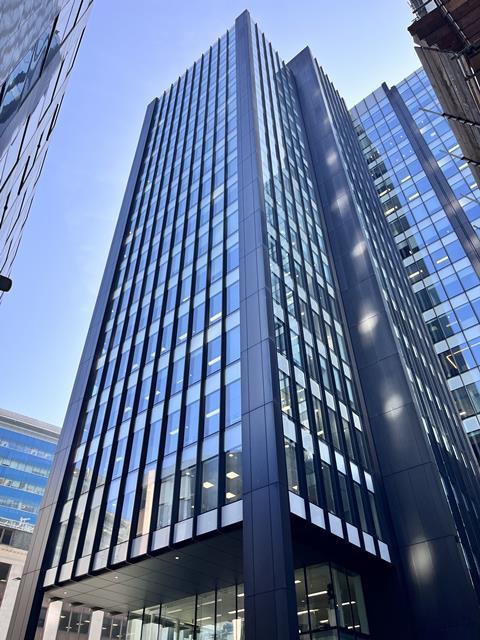
As he prepares to bow out, Clark adds that the role of the QS has inevitably changed. ŌĆ£We do everything quicker, more compressed, more overlapped today. Before, it was design it, then procure it and then build it. Now itŌĆÖs all at the same time.ŌĆØ
He says cost consultants have had to become better communicators since he started. ŌĆ£Back in the day, it was more orderly, more calm and methodical. Now weŌĆÖre managing volatility. WeŌĆÖre reporting to clients with often only half the information, but trying to give advice in that context.ŌĆØ
And he has this to say to up and coming QSs: ŌĆ£ItŌĆÖs really important your client understands what you donŌĆÖt know as well as what you do know. Our job, I think, has become one of being really, really effective communicators.
ŌĆ£DonŌĆÖt be afraid to say [to the client]: ŌĆśI donŌĆÖt think weŌĆÖre quite ready to make that decision and I donŌĆÖt think youŌĆÖre quite ready to make itŌĆÖ.ŌĆØ
He also believes the QS is not going to disappear in the face of an AI revolution. ŌĆ£I donŌĆÖt think AI is going to be as impactful as people are talking it up. I donŌĆÖt think it will replace the QS or designers or engineers. I do think, though, that it will help people do their jobs more effectively.
DonŌĆÖt make it a hatchet job. We were all hugely proud to work for that firm. So, when it was sold and things changed, it was inevitably a sad time for us
ŌĆ£[But] the problem with electronic tools is that theyŌĆÖre only as good as the information that goes into them. If the information that goes into them isnŌĆÖt very good, the answer that pops out isnŌĆÖt going to be very good.
ŌĆ£Outputs are highly fallible because it totally depends on inputs which are fallible. The QS will always have a role.ŌĆØ
A few days after our meeting, Clark gets in touch with a few more thoughts on the Aecom deal for DL. He knows it can continue to stir passions, the emotions it can dredge up. But he insists that he doesnŌĆÖt hold a grudge.
ŌĆ£DonŌĆÖt make it a hatchet job,ŌĆØ he says. ŌĆ£We were all hugely proud to work for that firm [Davis Langdon]. So, when it was sold and things changed, it was inevitably a sad time for us.
ŌĆ£IŌĆÖm most proud of what we have achieved with Core Five, the way we have shaped our business and the way in which the firm is perceived in the market. The key for me is that Core Five would never have existed had it not been for the changes at DL. ItŌĆÖs funny how life has a happy knack of turning out right in the end.ŌĆØ
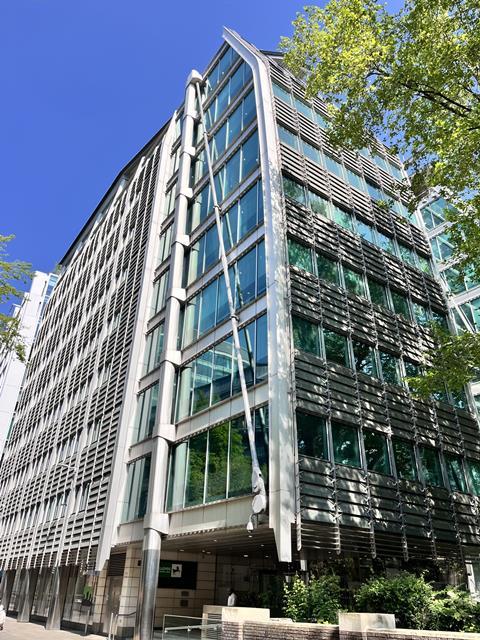
Way to go
Core Five co-founder James Clark begins to list the buildings he is most proud of. First thereŌĆÖs the job at 25 Gresham Street, which became the headquarters of Lloyds Bank. Designed by Grimshaw, he was at Davis Langdon when it was completed in 2002 by Exterior, the forerunner of the now collapsed ISG.
ŌĆ£Gresham Street was brilliant because the team was so strong,ŌĆØ he adds. ŌĆ£It was a joy of a project.ŌĆØ There was One Creechurch Place in the City for Helical, Core FiveŌĆÖs first major scheme. ŌĆ£I look back on that very fondly. IŌĆÖm also hugely proud of what weŌĆÖre doing at Broadgate [for British Land].ŌĆØ
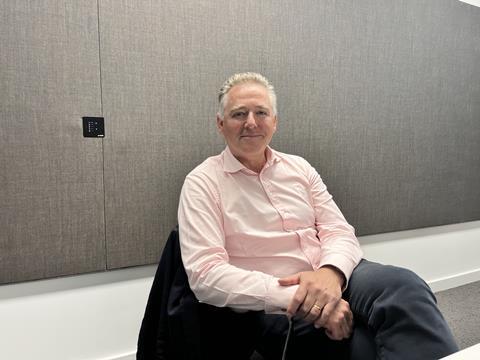
But he then has a bit more of a think and says: ŌĆ£You know what? What am I most proud of? Not a building but this business by leaps and bounds. Turning it into a bit of force, itŌĆÖs taken seriously ŌĆō it has been a wonderful achievement. It has been great.ŌĆØ

For now, though, a series of overseas adventures awaits, starting with a road trip in Canada this summer from Calgary, through the Canadian Rockies and on to Vancouver on the Pacific coast. He and partner Sara are planning to fit in much more.
ŌĆ£Iceland, Norway, Vietnam, Japan, South AmericaŌĆ” IŌĆÖd like to get to the South Island of New Zealand.ŌĆØ
Clark is reminded that most people who head off travelling usually come back and say it is the best thing they have ever done. ŌĆ£IŌĆÖm expecting to look back in a yearŌĆÖs time and think exactly the same,ŌĆØ he says.























No comments yet